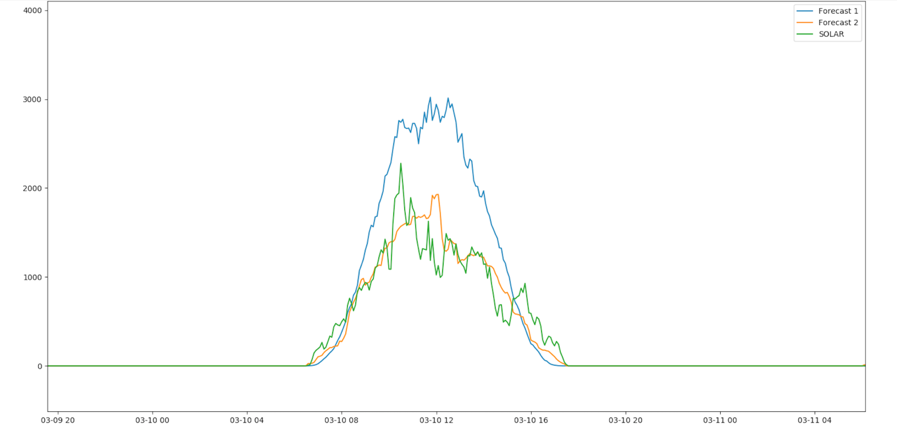Many people are looking for ways to optimize their auto consumption. Meaning, they want to use all -or at least as much as possible- of their own produced solar power. That’s good for their wallet, the environment and it’s the way forward to facilitate the smart grid. Smappee users can use Smappee’s dynamic load-balancing technology and automation to optimize their solar usage. As of now, they can even start controlling flows based on predicted available solar energy. This blog post unravels the secret behind Smappee’s solar forecast.

Making the most of all your solar energy.
Smappee recently introduced a series of new automation to direct energy towards appliances automatically, based on certain triggers. One of the new triggers is the forecasted (excess) solar power. Based on the amount of (excess) solar power available, users can use that energy to charge their EV, power the washing machine for a washing cycle, heat the water in the boiler, or power the A/C. That way, no solar power is lost to the grid, and auto-consumption is optimized.
But how can Smappee predict when there will be sufficient excess solar power to trigger this automation? Forecasting surplus solar energy isn’t magic but a well-thought-out combination of algorithms. The principle is simple: you take the estimated total solar production and subtract the estimated total load consumption. Nevertheless, the practice is not that simple. In order to be as accurate as possible, Smappee takes into account different datasets.
Solar PV forecast datasets.
First, past solar production and load consumption are considered, in order to get an idea of what a typical day for a certain user looks like. Second, additional weather data is taken into account. This allows Smappee to link the solar PV generation and the load consumption with a specific set of weather parameters: cloud coverage, temperature, humidity, etc. Smappee continuously updates and trains these different algorithms based on its large dataset helping to perfect -with forecasted weather parameters- its generation of a user-specific forecast.

This image shows the actual solar production (the green line) and the result of two forecasting methods (the blue and orange lines). It is clear that the second method (Forecast 2) offers better predictions than the first (Forecast 1). When one method keeps outperforming the other day after day, Smappee will use that one to generate forecasts.
Load consumption forecast.
The same logic is applied to predict the load consumption of each user. However, this is trickier due to (unpredictable) human behavior that might increase or decrease load consumption. Therefore, load consumption forecasts won’t always be as accurate as solar PV forecasts.
First, the past load consumption is considered, in order to get an idea of what a typical day of a certain user looks like. Then, similar to the solar forecast, additional weather data is taken into account. Again, these algorithms are continuously updated and trained to help Smappee generate more adequate user-specific forecasts.

This image shows the actual load consumption (the red line) and the result of two methods that try to predict it (the blue and orange lines). It is clear that the first method (Forecast 1) gives a better result than the second (Forecast 2). When one method keeps outperforming the other day after day, Smappee will use that one to generate forecasts.
Real-time adjustment in case of unexpected events.
The one constant for the weather and people’s behavior is that it is unpredictable. So, in addition to its AI that optimally allocates excessive solar power based on weather forecasts and historical consumption behavior, Smappee also makes continuous use of real-time adjustment of the energy flows. This way unexpected circumstances such as cloudy weather, unexpected work-from-home days, etc. can always be responded to immediately. As a result, Smappee ensures that there is never too little energy available to do the things you want to do or that fuses blow due to too much demand.
Do you also want to work more efficiently with solar energy in your building or home after reading this article? Get in touch with us, and get started with the Smappee App that, in addition to the automation, provides a lot of energy insights that allow you to save energy and costs.



